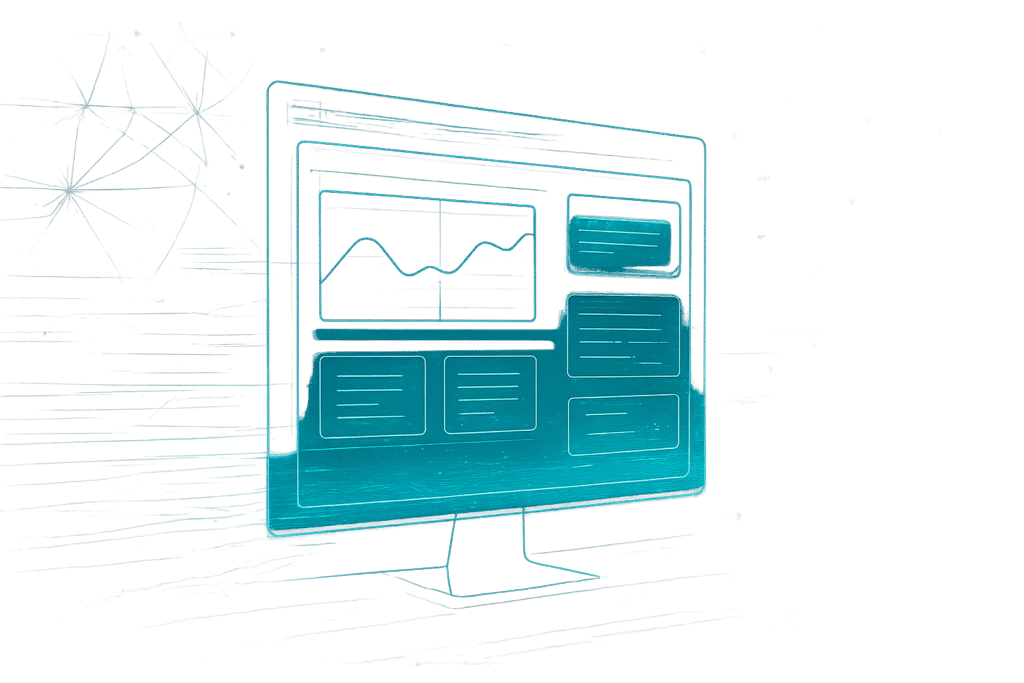
In a monumental announcement just six days ago, on November 18, 2025, Google (NASDAQ: GOOGL) unveiled a groundbreaking update to its Gemini artificial intelligence platform: Generative UI. This revolutionary capability, powered by the newly introduced Gemini 3—hailed as Google's "most intelligent model"—allows AI to dynamically construct entire user interfaces on the fly, from interactive web pages and simulations to bespoke applications, all based on simple user prompts. This development signifies a profound paradigm shift, moving beyond traditional static interfaces to an era where AI acts as a co-designer, fundamentally reshaping how users interact with digital experiences and how developers build them.
The immediate significance of Generative UI cannot be overstated. It ushers in an era of unprecedented personalization and dynamism in user experience, where interfaces are no longer pre-designed but emerge contextually from the user's intent. For the first time, AI is not merely generating content but is actively involved in the architectural and aesthetic design of interactive software, promising to democratize design capabilities and accelerate development cycles across the tech industry.
Gemini 3's Generative UI: A Deep Dive into Dynamic Interface Creation
The core of Google's latest innovation lies in Gemini 3's "generative UI" capabilities, which extend far beyond previous AI models' abilities to generate text or images. Gemini 3 can now interpret complex prompts and instantly render fully functional, interactive user experiences. This includes everything from a bespoke mortgage calculator generated from a financial query to an interactive simulation explaining RNA polymerase to a biology student. The AI doesn't just provide information; it crafts the very tool needed to engage with that information.
Technically, Generative UI is being rolled out through experimental features within the Gemini app, notably "dynamic view" and "visual layout." In "dynamic view," Gemini actively designs and codes a customized interactive response for each prompt, adapting both content and interface features contextually. For instance, explaining a complex topic like the human microbiome to a five-year-old would result in a vastly different interface and content presentation than explaining it to a seasoned scientist. This adaptability is also integrated into Google Search's AI Mode, providing dynamic visual experiences with interactive tools and simulations generated specifically for user questions. For developers, Gemini 3 offers advanced "agentic coding" and "vibe coding" capabilities within Google AI Studio's Build mode and the new agentic development platform, Google Antigravity. These tools enable the rapid generation of high-fidelity front-end prototypes from text prompts or even sketches, complete with sophisticated UI components and superior aesthetics.
This approach dramatically differs from previous UI/UX design methodologies, which relied heavily on human designers and front-end developers to meticulously craft every element. While previous AI tools might assist with code generation or design suggestions, Gemini 3's Generative UI takes the leap into autonomous, on-the-fly interface creation. Initial reactions from the AI research community and industry experts have been overwhelmingly positive, with many calling it a "third user-interface paradigm" in computing history, reversing the locus of control from the user specifying how to achieve an outcome to the AI dynamically determining and creating the interface to achieve it.
Reshaping the AI and Tech Landscape: Competitive Implications
Google's Generative UI update is poised to significantly impact AI companies, tech giants, and startups alike. Google (NASDAQ: GOOGL) itself stands to benefit immensely, solidifying its position at the forefront of AI innovation and potentially creating a new competitive moat. By integrating Generative UI into its Gemini app and Google Search, the company can offer unparalleled user experiences that are deeply personalized and highly dynamic, potentially increasing user engagement and loyalty.
For other major AI labs and tech companies, this development presents a formidable challenge and an urgent call to action. Companies like Microsoft (NASDAQ: MSFT), Amazon (NASDAQ: AMZN), and Meta Platforms (NASDAQ: META), all heavily invested in AI, will likely accelerate their efforts in generative AI for interface design. The competitive implications are clear: the race to develop equally sophisticated or even superior generative UI capabilities will intensify, potentially leading to a new arms race in AI-powered design tools and user experience platforms. Smaller AI startups specializing in design automation or low-code/no-code platforms might find their existing products disrupted, but also present new opportunities for integration or specialization in niche generative UI applications.
The potential disruption to existing products and services is vast. Traditional UI/UX design agencies and even in-house design teams may need to rapidly evolve their skill sets, shifting from manual design to prompt engineering and AI-guided design refinement. Front-end development frameworks and tools could also see significant changes, as AI begins to handle more of the boilerplate code generation. Market positioning will increasingly depend on a company's ability to leverage generative AI for creating intuitive, efficient, and highly customized user experiences, granting strategic advantages to those who can master this new paradigm.
Wider Significance: A New Era for Human-Computer Interaction
Google's Generative UI update fits squarely into the broader AI landscape as a monumental step towards truly intelligent and adaptive systems. It represents a significant stride in the quest for AI that can not only understand but also act creatively and autonomously to solve user problems. This development pushes the boundaries of human-computer interaction, moving beyond static interfaces and predetermined pathways to a fluid, conversational interaction where the interface itself is a dynamic construct of the AI's understanding.
The impacts are far-reaching. Users will experience a more intuitive and less frustrating digital world, where tools and information are presented in the most effective way for their immediate needs. This could lead to increased productivity, improved learning experiences, and greater accessibility for individuals with diverse needs, as interfaces can be instantly tailored. However, potential concerns also arise, particularly regarding the "black box" nature of AI-generated designs. Ensuring transparency, control, and ethical considerations in AI-driven design will be paramount. There's also the question of job displacement in traditional design and development roles, necessitating a focus on reskilling and upskilling the workforce.
Comparing this to previous AI milestones, Generative UI stands alongside breakthroughs like large language models generating coherent text and image generation models creating photorealistic art. However, it surpasses these by adding an interactive, functional dimension. While previous AI models could create content, Gemini 3 can create the means to interact with content and achieve tasks, effectively making AI a software architect. This marks a pivotal moment, signaling AI's increasing ability to not just augment human capabilities but to autonomously create and manage complex digital environments.
The Horizon: Future Developments and Applications
Looking ahead, the near-term and long-term developments stemming from Generative UI are poised to be transformative. In the near term, we can expect to see rapid iterations and refinements of Gemini 3's generative capabilities. Google will likely expand the types of interfaces AI can create, moving towards more complex, multi-modal applications. Integration with other Google services, such as Workspace and Android, will undoubtedly deepen, allowing for AI-generated UIs across a wider ecosystem. Experts predict a surge in "prompt engineering" for UI design, where the ability to articulate precise and effective prompts becomes a critical skill for designers and developers.
Potential applications and use cases on the horizon are vast. Imagine AI-generated educational platforms that dynamically adapt their interface and learning tools to a student's progress and learning style, or e-commerce sites that present entirely personalized shopping experiences with unique navigation and product displays for each user. In enterprise settings, AI could generate custom internal tools and dashboards on demand, dramatically accelerating business process automation. The concept of "adaptive environments" where digital spaces continuously reshape themselves based on user behavior and intent could become a reality.
However, significant challenges need to be addressed. Ensuring the security and robustness of AI-generated code, maintaining design consistency and brand identity across dynamic interfaces, and establishing clear ethical guidelines for AI in design are crucial. Furthermore, the ability for humans to override or fine-tune AI-generated designs will be essential to prevent a complete loss of creative control. Experts predict that the next phase will involve more sophisticated "human-in-the-loop" systems, where AI generates initial designs, and human designers provide critical feedback and final polish, fostering a symbiotic relationship between human creativity and AI efficiency.
A New Chapter in AI History: The Age of Generative Interfaces
Google's Gemini 3 update, with its groundbreaking Generative UI, represents a definitive turning point in the history of artificial intelligence and human-computer interaction. The key takeaway is clear: AI is no longer merely a tool for content creation or analysis; it is now a powerful co-creator of the digital world itself, capable of architecting and rendering interactive user experiences on demand. This development fundamentally alters the landscape of UI/UX design, shifting it from a purely human-centric craft to a collaborative endeavor with highly intelligent machines.
This development's significance in AI history cannot be overstated. It marks a critical step towards truly intelligent agents that can not only understand and reason but also build and adapt. It's a leap from AI assisting design to AI performing design, opening up unprecedented possibilities for personalized, dynamic, and context-aware digital interactions. The long-term impact will likely include a democratization of design, accelerated software development cycles, and a redefinition of what constitutes a "user interface."
In the coming weeks and months, the tech world will be closely watching several key areas. We'll be looking for further demonstrations of Generative UI's capabilities, particularly in diverse application domains. The adoption rate among developers and early users will be a crucial indicator of its immediate success. Furthermore, the responses from competing tech giants and their own generative UI initiatives will shape the competitive landscape. As AI continues its relentless march forward, Google's Generative UI stands as a powerful testament to the ever-expanding frontiers of artificial intelligence, heralding a new, exciting, and perhaps challenging chapter in our digital lives.
This content is intended for informational purposes only and represents analysis of current AI developments.
TokenRing AI delivers enterprise-grade solutions for multi-agent AI workflow orchestration, AI-powered development tools, and seamless remote collaboration platforms.
For more information, visit https://www.tokenring.ai/.




